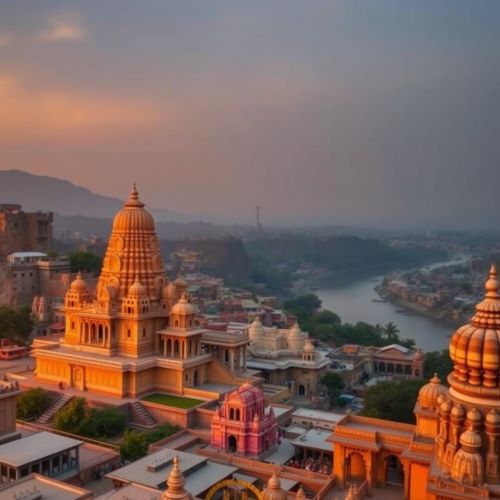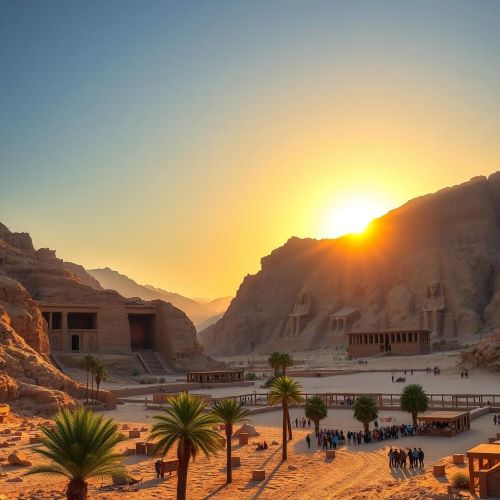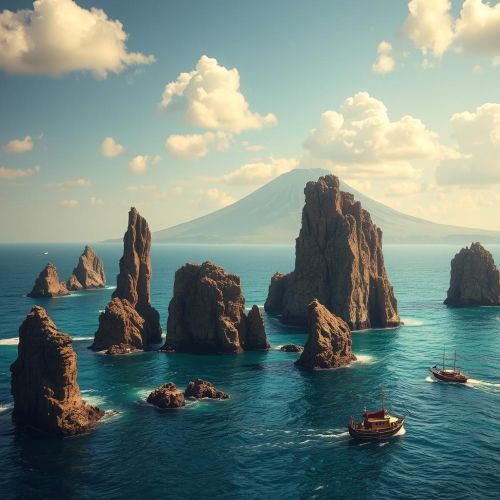Ram Sethu : A Journey Across Myth, Memory, and the Sea
At a glance
| Description | |
|---|---|
| Mythology | Indian Mythology |
| Country | India, Sri Lanka |
| Closest airport | Madurai International Airport (IXM) |
| Type | Natural |
| Accessibility | 10/10 |
Ram Sethu
Introduction
Ram Sethu, widely known as Adam’s Bridge, is one of the most intriguing natural and cultural landmarks in South Asia. Stretching roughly 48 kilometres across the shallow waters of the Palk Strait, this chain of limestone shoals links India’s Pamban Island with Sri Lanka’s Mannar Island. What makes Ram Sethu especially captivating is the fusion of geological curiosity and profound mythological importance it carries. While scientists describe it as a natural formation created by sedimentation, coral growth, and limestone accumulation, traditional narratives celebrate it as the legendary bridge built by Lord Rama’s forces in the Ramayana. Visitors who journey to Rameswaram and Dhanushkodi often discover that Ram Sethu is not just a destination—it is an experience shaped by mythology, spirituality, and the raw beauty of the southern coastline.
Connection with Mythology
In the epic Ramayana, Ram Sethu is referred to as Sethubandhanam, the miraculous bridge built by Lord Rama and his Vanara army to reach Lanka and rescue Sita from the demon king Ravana. Under the leadership of Nala, the architect among the Vanaras, the army reportedly used stones that floated on the ocean due to the divine grace of Rama’s name. This story has been retold for thousands of years in countless versions, including Valmiki’s Ramayana, the Ramcharitmanas, and regional folk traditions across India and Sri Lanka.
Sri Lankan interpretations also embrace parts of the Ramayana through the Ramayana Trail, highlighting sites believed to be associated with Sita’s captivity and Rama’s journey. Beyond Hindu traditions, some Islamic and Christian references use the name “Adam’s Bridge,” linking it with the belief that Adam crossed this formation while journeying to Adam’s Peak in Sri Lanka. These layered narratives make Ram Sethu a mythological landmark revered across multiple cultures.
Ways to Get There
Reaching Ram Sethu usually begins with travel to Rameswaram, one of the holiest towns in Tamil Nadu.
The nearest airport is Madurai International Airport, located about 170 kilometres away. From Madurai, travellers can hire taxis or board state and private buses to Rameswaram. The town also has a railway station with direct connections to Chennai, Madurai, Coimbatore, and other major South Indian cities. Driving to Rameswaram is a scenic experience, especially while crossing the Pamban Bridge—India’s historic sea bridge and an engineering marvel in its own right.
To get the closest view of Ram Sethu, visitors usually head to Dhanushkodi, the eastern tip of Rameswaram. From there, authorised jeeps operate across the sandy terrain towards the point from where the submerged shoals become visible. Boat rides are also offered from select points near Rameswaram, allowing travellers to enjoy panoramic views of the shallow waters and the beginning of the famous chain of shoals.
On the Sri Lankan side, Talaimannar offers proximity to the formation, although direct tourism access remains limited due to conservation and security regulations.
What to Look For
Dhanushkodi is one of the most atmospheric places connected to Ram Sethu. Once a thriving town, it was destroyed in the devastating 1964 cyclone and today stands as an eerie yet beautiful reminder of nature’s power. The ruins, the meeting point of the Bay of Bengal and the Indian Ocean, and the serene shoreline make it a compelling stop for travellers.
The Ramanathaswamy Temple in Rameswaram adds another dimension to the journey. With its sacred tanks and the longest temple corridor in India, the temple is closely tied to Rama’s legend, as he is believed to have prayed here before setting out for Lanka. Some local temples also display floating stones, which devotees associate with the Ramayana narrative.
Nature enthusiasts will appreciate the proximity of the Gulf of Mannar Marine Biosphere Reserve, known for its rich marine life, coral reefs, and migratory birds. The shallow waters around Ram Sethu offer striking patterns and shades of blue that are particularly visible during clear weather. Visitors drawn to geography and archaeology often find the contrast between scientific and mythological interpretations especially compelling.
Need a place to stay? Book your hotel room now!
Importance in cultural history
Ram Sethu holds an unmatched position in the cultural memory of India and Sri Lanka. Beyond its religious significance, it has influenced political debates, historical studies, and conservation efforts. The bridge is often cited as a symbol of devotion, perseverance, and divine support in Hindu tradition.
Historical accounts from as early as the 9th century, including writings by Persian geographer Ibn Khordadbeh, mention the existence of a land connection in the region. Some researchers suggest that Ram Sethu may have been used as a walking route in ancient times before natural changes submerged portions of it.
In modern history, discussions around projects like the Sethusamudram Canal have brought renewed attention to Ram Sethu, with many groups advocating for its preservation due to its religious, cultural, and ecological importance. Efforts to declare it a protected heritage site reflect the strong emotional and cultural connection people share with this ancient structure.
Best time to travel
The most comfortable time to visit Ram Sethu and the surrounding areas is from October to March. During these months, temperatures are moderate, humidity is lower, and the sea is calmer, making outdoor exploration far more enjoyable. This period also aligns with major festivals such as Maha Shivaratri and Rama Navami, turning Rameswaram into a vibrant cultural hub for pilgrims and travellers.
From June to September, the monsoon season brings strong winds and heavy rains, which can restrict access to the sandbars of Dhanushkodi and reduce visibility around the shoals. Summers, though manageable, can be hot and humid. Travellers seeking the clearest views of the sea and the shoal formations will find the winter months ideal.
Source
Gayatri Heritage. (2025, February 26). Ram Setu: The Historical Bridge of India. https://gayatriheritage.com/blogs/our-blogs/ram-setu-the-historical-bridge-of-india
Rameshwaram Tourism. (2025, October 14). Rama Setu (Adam’s Bridge) in Rameshwaram (Timings, Entry). https://rameshwaramtourism.co.in/rama-setu-adam-s-bridge-rameshwaram
Testbook. (2023, August 31). Everything You Need To Know About Ram Setu. https://testbook.com/ias-preparation/ram-setu
Tamil Nadu Tourism. Ram Sethu Bridge | Tamil Nadu Tourism. https://www.tamilnadutourism.tn.gov.in/destinations/ram-sethu-bridge
Wikipedia. (2003, November 19). Rameswaram – Wikipedia. https://en.wikipedia.org/wiki/Rameshwaram
5 Senses Tours. (2025, July 2). Ram Setu: Was it Man-Made or Nature’s Creation? https://5sensestours.com/ram-setu-was-it-man-made-or-natures-creation/
Traveling Ceylon. (2025, June 26). Ram Setu: Unraveling the Mysteries of Adam’s Bridge | Journey into Ceylon’s Timeless Beauty. https://travelingceylon.com/blog/ram-setu-unraveling-the-mysteries-of-adams-bridge
Phool. (2025, July 1). Is the Ramayana Bridge Real? Unveiling the History of Ram Setu. https://phool.co/blogs/festivalstraditions/is-the-ramayana-bridge-real-unveiling-the-history-of-ram-setu
Frequently Asked Questions
What is Ram Sethu and where is it located?
Ram Sethu, or Adam’s Bridge, is a chain of limestone shoals between Rameswaram in India and Mannar Island in Sri Lanka.
Is Ram Sethu man-made or natural?
Scientific studies describe it as a natural formation, while mythology credits Lord Rama’s Vanara army with constructing the bridge.
Can tourists visit Ram Sethu?
Visitors cannot walk on the bridge, but they can view it from Dhanushkodi or through authorised boat rides near Rameswaram.
Why is Ram Sethu important in the Ramayana?
It represents the passage built by Rama to reach Lanka and rescue Sita, symbolising courage, devotion, and divine assistance.
What is the best time to visit Ram Sethu?
The ideal travel season is October to March, when the weather is pleasant and sea conditions are stable.









